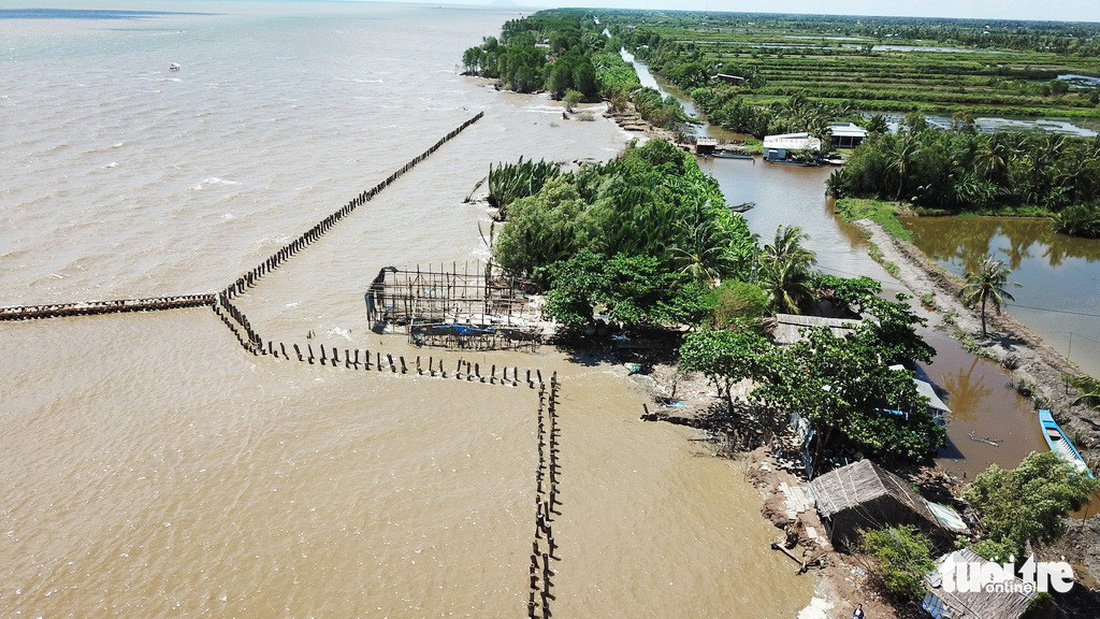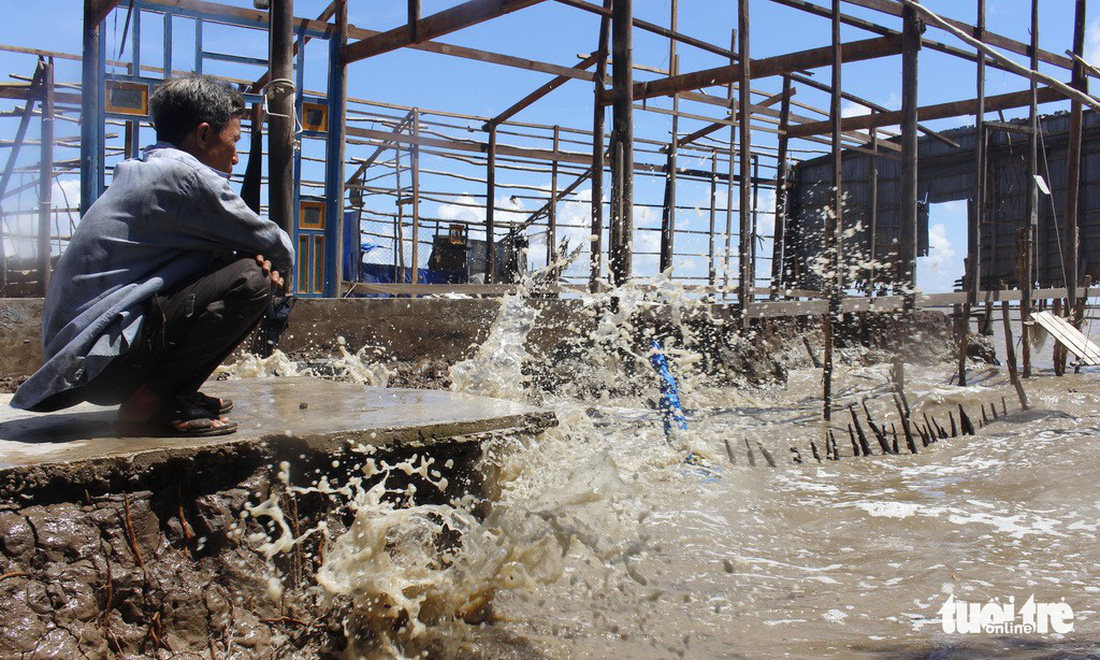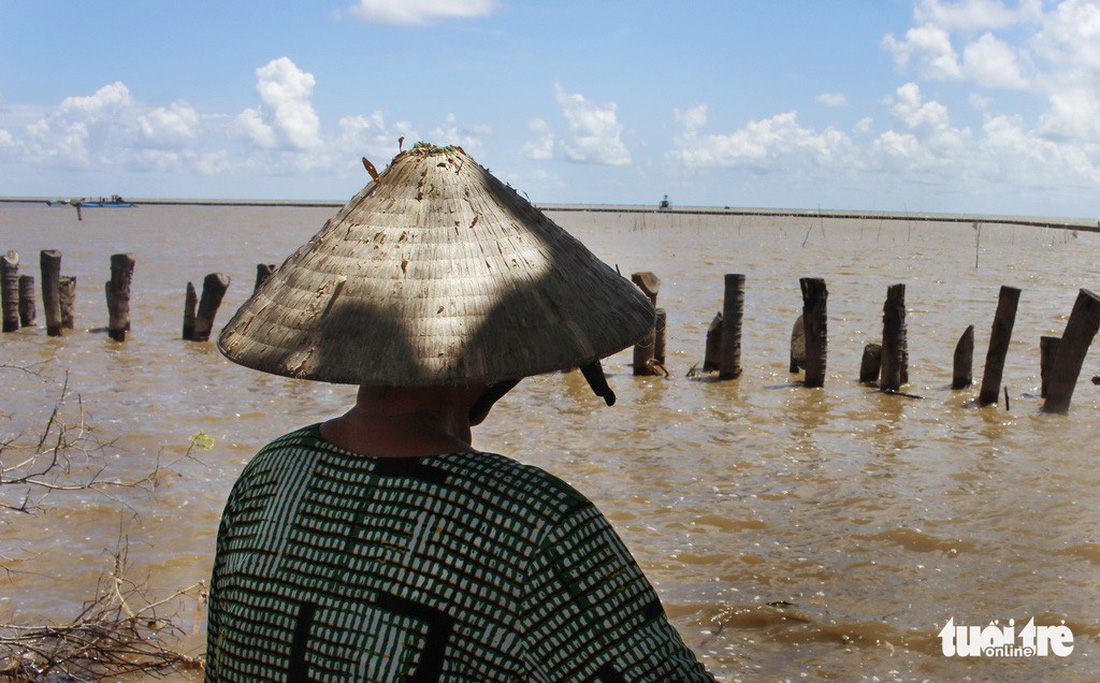Increasingly serious coastal erosion has taken away the homes and livelihoods of many people in the Mekong Delta provinces of Ca Mau and Kien Giang.
Subsidence along the coastline in Ca Mau and Kien Giang is the most concerning issue at this time of the year.
Houses have been devoured, while vast areas of protection forest and embankment have proved ineffective to rectify the situation.
“There are only two types of season here, the subsidence season and peaceful season,” a local resident remarked.
According to experts, the “subsidence season” of Ca Mau and Kien Giang often occurs from May to October of the lunar calendar.
A border guard officer in Khanh Tien Commune, U Minh District, Ca Mau, said there used to be a large area of forest along the coast in the locality.
The vegetation was so thick that people were not able to see the ocean from the mainland, he added.
 |
| A dyke along the coastline An Minh District, Kien Giang Province. Photo: Tuoi Tre |
However, strong waves and subsidence have caused most forests in the commune to vanish, before sinking many homes over the past years.
A report from the Ca Mau administration showed that the province had lost over 8,800 hectares of protection forest to coastal erosion over the past decade.
A similar situation also happens in Kien Giang Province.
“We all had to abandon our houses for our own safety,” said Banh Kim Hia, a 69-year-old resident in An Minh District.
Hia and her neighbors enjoyed a well-off life with their agricultural and aquacultural farming until coastal subsidence took everything away.
Banh Van Noi, 53, said his family had had to relocate for multiple times due to the same issue, adding that he currently has nowhere left to move to.
“My house used to be hundred of meters away from the coastline and was still devoured by the subsidence,” Noi continued.
 |
| Banh Van Noi sits by his house, which was severely damaged by strong waves. Photo: Tuoi Tre |
Residents in Tho Son Commune, Hon Dat District, who previously earned a stable living by raising shrimp and fish, are now struggling to take care of themselves and their families.
Many of them were forced to leave their hometown to find a new job.
According to Tran Phan, vice-chairman of the People’s Committee in Tho Son, over 400 households with tens of thousands of people live solely on aquaculture.
“If subsidence affects their land, they will become empty-handed,” Phan stated.
Prime Minister Nguyen Xuan Phuc signed a decision last week to allocate VND1.5 trillion (US$66 million) from the national budget to deal with serious subsidence across the Mekong Delta.
In mid-June, the Ministry of Agriculture and Rural Development introduced an online map detailing all subsidence hotspots in the region, which is aimed at providing better control over risks and safety in the affected areas.
Like us on Facebook or follow us on Twitter to get the latest news about Vietnam!





















































